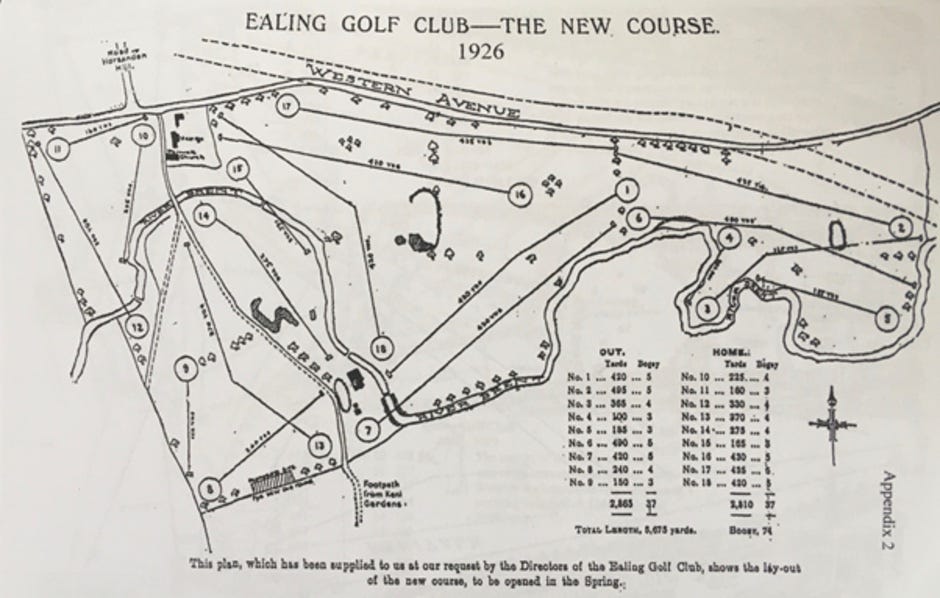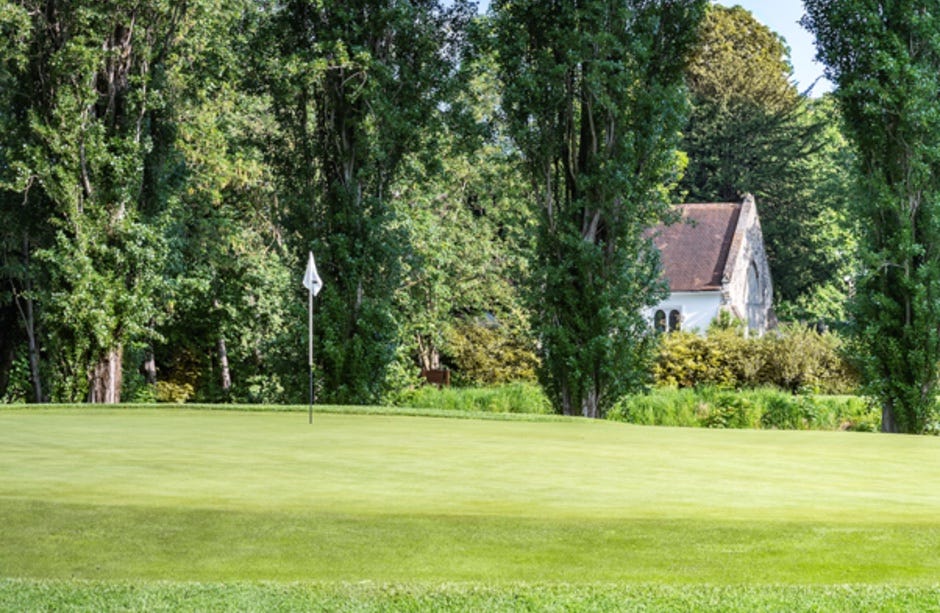Courtesy of Ealing GC
The average UK golf course is 111 acres in size, twice as big as 50% of our farms. It means the average hole, of which there are 18, requires about 6 acres. A typical housing development will squeeze at least 4 homes into one of those acres.
In a recent Golf Clubs Survey from accountants, Hillier Hopkins, 64% of members are aged 50 or over and 21% over 70. Only 15% of the membership are women and 9% juniors.
I'm sharing this information because I think there’s an intriguing problem for many golf clubs to face. How to satisfy the needs of a bunch of old men in the short term but have a longer term plan which guarantees to keep on attracting new members? Satisfying new needs will be different and will extend well beyond playing a challenging course and drinking a decent pint of beer which doesn't break the bank.
The player of the future will be living with new social norms, one of which will be a conscious, positive contribution to the climate. That includes where they choose to spend their time and how much of it. I expect anything that reduces the current 4 hour plus round will be popular. 9-hole competitions for instance.
What’s happening to golf clubs?
It's not an easy time in golf club history.
According to the Hillier Hopkins survey, waiting lists are now declining again. This won't come as a surprise to any club after the extraordinary Covid blip, when golf suddenly surged, regarded as a safe sport with little chance of infection. Costs are also rising with a third of all club memberships now more than £1,600 per year.
I mentioned housing earlier, because there's always pressure to build on golf courses, especially in and around urban areas. Whether it's a decision by a members owned club to pinch some available land to pare down debts or a rich entrepreneur, who owns a club, but always had an eye on a return from a longer term property development. The promises made to the membership years earlier, finally proving to be hollow. It’s happening to a club which was a regular Ealing fixture now.
Ealing GC
I'm a member of Ealing Golf Club, founded in 1898. It's 9 miles and 30 minutes from Marble Arch, which makes it one of the closest, if not the closest club to Central London.
It's really three clay fields, as the General Manger of another club once told me when I was weighing up my options. He forgot to add that the Harry Colt design (a famous golf architect, pre-second world war) had created an impressive challenge on a measly 80 acre site. It still receives plaudits today for the speed and smoothness of the greens and the well preserved fairways.
Perhaps the biggest issue for any club thinking about longer term strategic direction, is that they're unlikely to be able to afford it. Like the Poplar trees in this picture, which took over 50 years to become such a magnificent backdrop for the 17th green, the payback is painfully slow.
Balancing the books today, doesn't include thinking about golfers who haven't been born yet, unless you have deep pockets and a determination to consider the long term. Not to try, is an even more risky course of action, if the club expects to remain in business and avoid becoming another housing estate.
It doesn't mean the club has to change immediately. But it must start to plan for change, which means fully costed calculations with some sense of how it might be paid for?
There is also an overbearing issue which has to be addressed, regardless of course management, clubhouse developments, membership fees and changes to how the game is played. If the club, and I'll refer to Ealing from now on, and its members, don't actively strive to be carbon neutral or better, the club won't survive.
Thoughts for change
Let's start with the car park and how people travel to and from the course. Ealing has a relatively small problem. It's not a destination course and most of the members live locally. For central London residents, the Central Line could serve the membership very well. It was one of the reasons I joined. The majority of us still prefer to drive, because clubs in a boot is very convenient. It was a bad habit I got into during lockdown, when some golf was allowed.
The bicycle rack is small and you'll always find a spot. It's also not secure enough for expensive bikes, another limiting factor. The club is certainly not encouraging members to leave their cars behind just yet.
Last Sunday, I saw three Tesla's in the car park before 09:00am. That's still a minority, but it's only going one way, and it won't be hydrogen fuel, at least not for cars.
France has recently approved legislation that will require all car parks with more than 80 spaces to be covered with solar panels. Dutch rock festival car park for another example. If the French government can see the benefit, why won't others?
The carpark should be a priority because there are several significant benefits. It's one way the club could become a net positive energy contributor. The power generated would need to be stored in batteries, servicing the needs of the clubhouse and any other nearby buildings. Each space would be fitted with a charge point, encouraging members to switch from fossil fuel cars, especially those without the option of home charging. Price per kWh could be set quite low, but still maintaining a club profit to pay for the original expense.
Membership buying power should also be used to offer an electric vehicle (EV) scheme, like OnTo, with rental periods as short as a month. I liked it so much I stayed for over a year before deciding to purchase an EV.
A second bank of solar panels would need to be installed in the green keeping garage area for charging all course machinery, following a natural phasing out of the current fossil fuel models. Specialist equipment which is necessary but expensive, should be bought as part of a consortium with other local clubs - Sudbury, West Mid, Pinner Hill, all spring to mind.
Solar panels are unlikely to have any sort of planning application refused, while small wind turbines might. The only noticeable wind is felt on the course, but nothing like enough, most of the time. Tapping into that free resource is best left to coastline links and hilly clubs with exposed fairways.
Island of Coll
I once played the 9-hole golf course on the Island of Coll in the Inner Hebrides. You paid in the village pub using the honesty box, before walking up the hill. It's no surprise that the only other creatures we shared the course with that day were the cows and a few sheep. We concluded that a good result was being able to avoid the cow pats.
I'm not proposing some sort of re-wilding project for Ealing. But planting will be significantly important in the future for two reasons. The only real asset the club has is the land it stands on. If it doesn't want to become a housing estate, then it needs to grow something which it can sell. If not, then I expect membership fees will need to increase well beyond their current level. It also needs to maintain and improve biodiversity, through conservation and ecosystem development.
Metropolitan open land (MOL), a form of land designation in London which provides similar protection to green belt, has to meet at least one of four stipulations. While Ealing currently does, what's to say that the criteria won't become more stringent in the future?
What to grow?
It seems a missed opportunity to me, that a golf club which serves food doesn't have its own vegetable patch. The aim should be to grow as much as possible for the menu. Given that our current gardeners are volunteer golfers doing a brilliant job but with hands already full, why not reach out to the local community for help and support? Are there any schools or sixth form colleges which might want to grow food in order to introduce a practical element to their climate change syllabus? It would also encourage members to eat more frequently at the club.
I’m sure I saw beehives tucked away in a corner of Hendon Golf Club, when I played there last summer. Plan Bee even offer to look after them for you and it’s another opportunity to work with schools.
The only cash crop I can think of, aside from pots of honey, are trees. There is so much spare land on the fringes of the course, which could easily accommodate saplings such as Dogwood, Japanese Maple, Elm, even Christmas trees, grown for members to eventually choose and cut down from the clubs designated nurseries. The other varieties mentioned, would be potted and sold on to commercial nurseries after growing for 5-10 years.
Courtesy of Berkhamsted GC
Someone once told me it cost £20k to properly line a bunker to prevent the sand leaching away into the clay substrata, a problem which Ealing suffers from. Why not do what Berkhamsted have done and reject these man-made hazards, or at least greatly reduce them. Sand does not form part of any natural parkland environment and could be replaced with hummocks of coarser grass to reward the wayward shot. Berkhamsted is ranked a top 100 English course and has a policy of letting nature take its course. It proves it can be done without detracting from the challenge of playing a tough course.
More local community interaction has to be a good thing. Our friendly members crowd into the clubhouse and outdoor seating area during the season, especially at weekends. But what about the long winter months, where rooms remain empty and the club loses money staying open for the odd beer, coffee and a teacake?
Make it more welcoming for dance classes, book clubs and cafe society, wherever that is and less like a golf club from the 1950s. Start by removing all of those faded Captain's photos and become a club looking forward, not hamstrung by its past.







